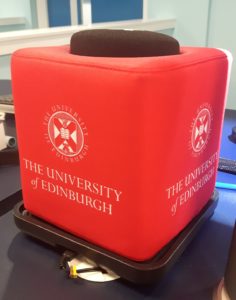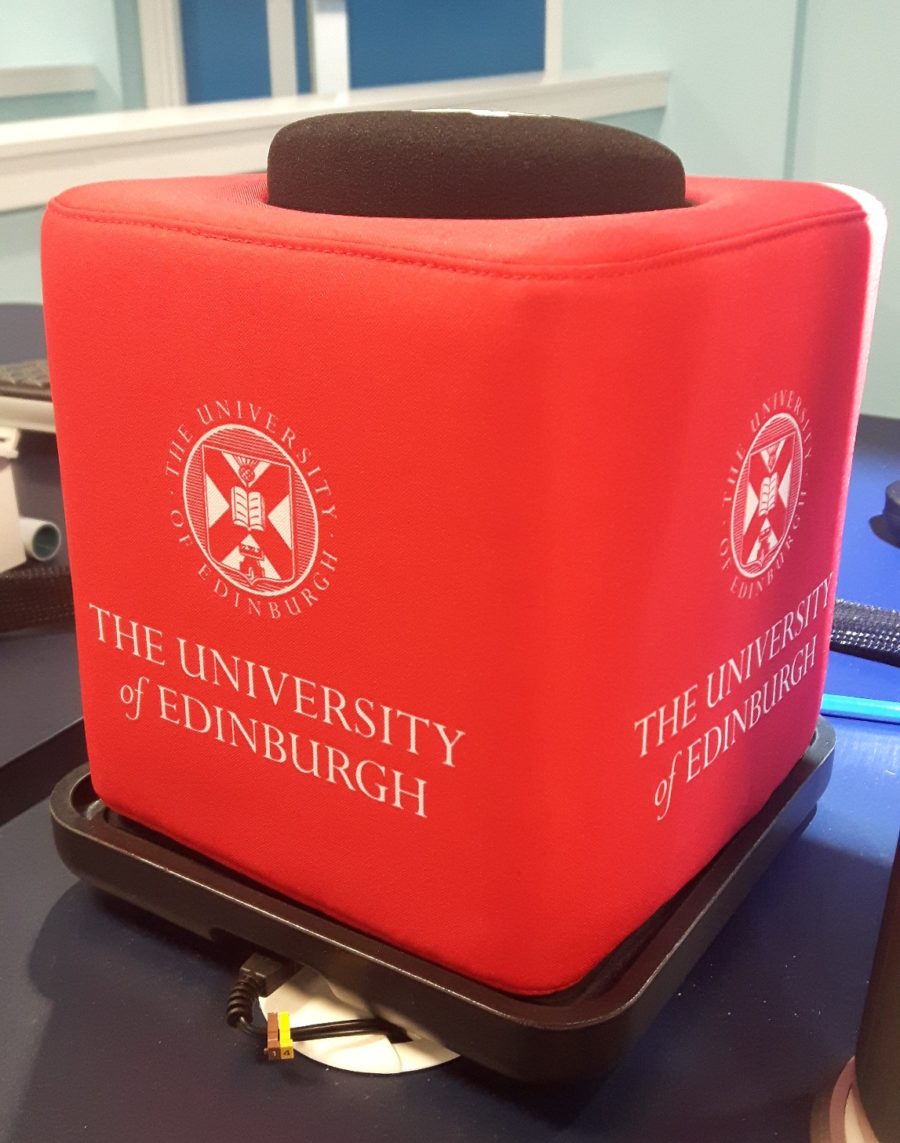Learning to Use the Audio-Visual Equipment
I went to a training session on using the audio-visual equipment in the lecture theatres, and there were several things that caught my interest.
The first point was how much audio visual technology has moved on in general since my student days. There are cameras and speakers in the ceilings, and several big screens around the rooms which can be used to project either the camera feed or a computer screen displaying presentation slides (or both).
Remote controls are unique to the equipment in each lecture room, in theory to discourage borrowing, though apparently they still go missing more often than you’d think 🙄.
Stranger still, unless an opt-out is prearranged, every lecture is recorded by default and stored in an online database for at least several years. These can be accessed and played back later using Media Hopper Replay.
The lecturers have to remember to wear and activate microphones to project and record the audio, and they can also pause and restart the recording with a set of control buttons. The recordings finish at the pre-set time, and do not add on the times when recording was paused.
The Catch Box

The Catch Box: Smart, well-designed, professional, great for throwing at/to students
The Catch Box is a microphone designed for question and answer sessions with a student audience. The microphone is safely embedded in a padded cube so that it can be thrown at (or to!) the questioner, perhaps depending on the behaviour of the audience and general mood of the room😄.
The physical act of throwing and catching it is an important part of engaging the students and encouraging them to speak out, according to the company’s website:
Catchbox encourages everyone to join the conversation. The unique fun-factor of catching and throwing breaks down barriers and allows people to feel confident when sharing their ideas.
Afterwards, it recharges wirelessly by fitting neatly onto a square charging pad.
And best of all – this is what I liked about it most of all – the microphone is held in place by magnetism. It’s hard to pull out of the padded cube, but can be easily removed by twisting the microphone 90°, which breaks the alignment of the magnets and stops them attracting.
It looks so simple, with such an all round elegant design, combined with clever use of behavioural science. It almost surprises the students into taking a more active role in their learning – I love it. Might get one to throw at my own kids.
Here’s a short video showing the Catch Box in action:
https://www.facebook.com/Catchbox/videos/135603674483606/

